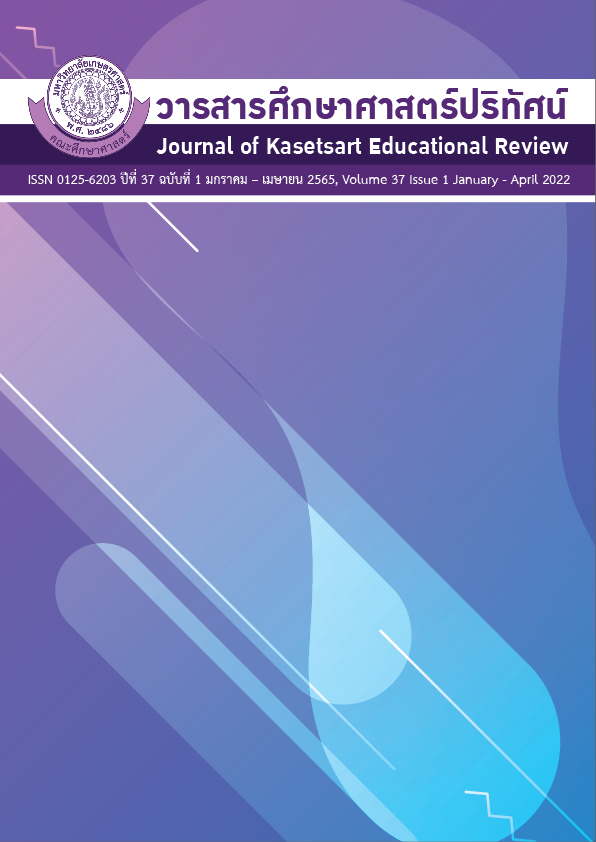Effectiveness of a Media Literacy Promotion Program for Consuming Behavior Modification on Safety Cosmetic Consumption among Female Senior High School Students
Keywords:
Media Literacy, Health Behavior Modification Program, Health and Beauty Products, Female StudentsAbstract
The purpose of this quasi-experimental research aimed to study effectiveness of a media literacy promotion program for consuming behavior modification on safety cosmetic consumption among female senior high school students. The target groups of this study were female senior high school students at Potisanwittaya school, Kusuman District, Sakon Nakhon Province selected by purposive sampling with inclusion criteria was used to recruit participants. There were 40 female students participated in program by researcher development in 4 visits for 4 weeks. Questionnaire comprise of biosocial data questionnaire, media literacy questionnaire and consumer cosmetic consumption safety behavior questionnaire, developed by the researcher was used as an instruments to collect data. Data were collected at before and after implementing the program. Mean, standard deviation and paired t-test were used to analyze the data
The study results showed that, the effectiveness of a media literacy promotion program for consuming behavior modification on safety cosmetic consumption was the target groups had higher scores on media literacy and consumer cosmetic consumption safety behavior than before participating in the program at a .05 significant level.
References
Authamontree, S. (2012). Effectiveness of experiential health education instruction model to promote media literacy regarding health products on internet for high school students. Journal of Humanities, 19(1), 163-176. [in Thai].
Bergsma, L.J. & Carney, M.E. (2008). Effectiveness of health-promoting media literacy education: a systematic review. Health Education Research, 23(3), 522-542. doi: 10.1093/her/cym084
Chaikoolvatana, A. & Soontara, C. (2011). The effect of health education program on high school mastering the media advertisement of dietary supplement among female students in the Northeastern Thailand. Srinagarind Medical Journal, 26(1), 25-34. [in Thai].
Chiawsutthi, P., Sriprasertpap, K. & Sriarunrasmee, J. (2020). The study effects by using learning activity package for enhancing creative skills in media literacy for lower secondary students. Journal of Educational Measurement, 37 (101), 159-170. [in Thai].
Duran, R.L., Yousmman, B., Walsh, K.M. & Longshore, M.A. (2008). Holistic media education: an assessment of the effectiveness of a college course in media literacy. Communication Quarterly, 56(1), 49-68. doi: 10.1080/01463370701839198
Fuchs, M. (2008). An introduction to media literacy. Journal of Media Literacy Education, 2(3), 246-247.
Fuller, H.A., Damico, A.M. & Rodgers, S. (2004). Impact of a health and media literacy curriculum on 4th grade girls: a qualitative study. Journal of Research in Childhood Education, 19(1), 66-78. doi: 10.1080/02568540409595055
Geraee, N., Kaveh, M.H., Shojaeizadeh, D. & Tabatabaee, H.A. (2015). Impact of media literacy education on knowledge and behavioral intention of adolescents in dealing with media messages according to stage of change. Journal of Advances in Medical Education & Professionalism, 3(1), 9-14.
Hobbs, R. (2003). Measuring the acquisition of media literacy skill. Reading Research Quarterly 38(3), 330-355. doi: 10.1598/RRQ.38.3.2
Hobbs, R. (2011). The state of media literacy: a response to potter. Journal of Broadcasting & Electronic Media, 55(3), 419-430. doi: 10.1080/08838151.2011.597594
Huesmann, L.R. & Taylor, L.D. (2006). The role of media violence in violent behavior. Annual Review of Public Health, 27, 393-415. doi: 10.1146/annurev.publhealth.26.021304.144640
Jirawatkul, A. (2016). Statistic for health science research (4th ed.). Bangkok: Wittayapat. [in Thai].
Joyce, B., Weil, M. & Calhoun, E. (2004). Model of teaching (7th ed.). Boston: Allyn and Bacon.
Levin-Zamir, D., Lemish, D. & Gofin, R. (2011). Media Health Literacy (MHL): development and measurement of the concept among adolescents. Health Education Research, 26(2), 323-335. doi: 10.1093/her/cyr007
Livingstone, S. (2004). What is Media Literacy?. Intermedia 32(3): 18-20.
Makesrithongkum, B. & Bunnag, K. (2014). The news consumption behavior through facebook by people of different ages in Thai society. Warasan of Graduate Studies Valaya Alongkorn Rajabhat University, 8(3), 230-247. [in Thai].
Potisanwittaya school. (2019). School information of Phothisanwittaya school academic year 2019. Retrieved from https://data.boppobec.info/ web/index_view_stu.php?School_ID= 1047540634&Edu_year=2562&p=y. [in Thai].
Potter, W.J. (2008). Media literacy (4th ed.). London: SAGE.
Rodprapan, P., Thamrongsotthisakul, W. & Vibulrangson, S. (2016). Development of a youth media literacy curriculum based on participation learning for junior secondary school students. Journal of Education Naresuan University, 8(14), 156-170. [in Thai].
Rovinelli, R.J., & Hambleton, R.K. (1977). On the use of content specialists in the assessment of criterion-referenced test item validity. Dutch Journal of Educational Research, 2(2), 49–60.
Streiner, D.L., & Norman, G.R. (1995). Health measurement scales: a practical guide to their development and use (2nd ed.). Oxford: Oxford University Press.
Thiarawiboon, S. & Boonchuaythanasit, K. (2019). Construction of a consumer cosmetic consumption safety behavior scale for high school students. Journal of Health Science Research, 13 (1), 40-50. [in Thai].
Ulaş, A.H., Epçaçan, C. & Koçak, B. (2012). The concept of “media literacy” and an evaluation on the necessity of media literacy education in creating awareness towards Turkish language. Procedia-Social and Behavioral Sciences, 31, 376-384. doi: 10.1016/j.sbspro.2011.12.070
Wan, G. & Gut, D.M. (2008). Media use by Chinese and U.S. secondary students: implications for media literacy education. Theory Into Practice, 47(3), 178-185. doi: 10.1080/00405840802153783
Downloads
Published
Issue
Section
License
Copyright (c) 2022 Journal of Kasetsart Educational Review

This work is licensed under a Creative Commons Attribution-NonCommercial-NoDerivatives 4.0 International License.
บทความทุกบทความเป็นลิขสิทธิ์ของวารสารคณะศึกษาศาสตร์ มหาวิทยาลัยเกษตรศาสตร์ วิทยาเขตบางเขน
วารสารศึกษาศาสตร์ปริทัศน์ (Kasetsart Educational Review)






